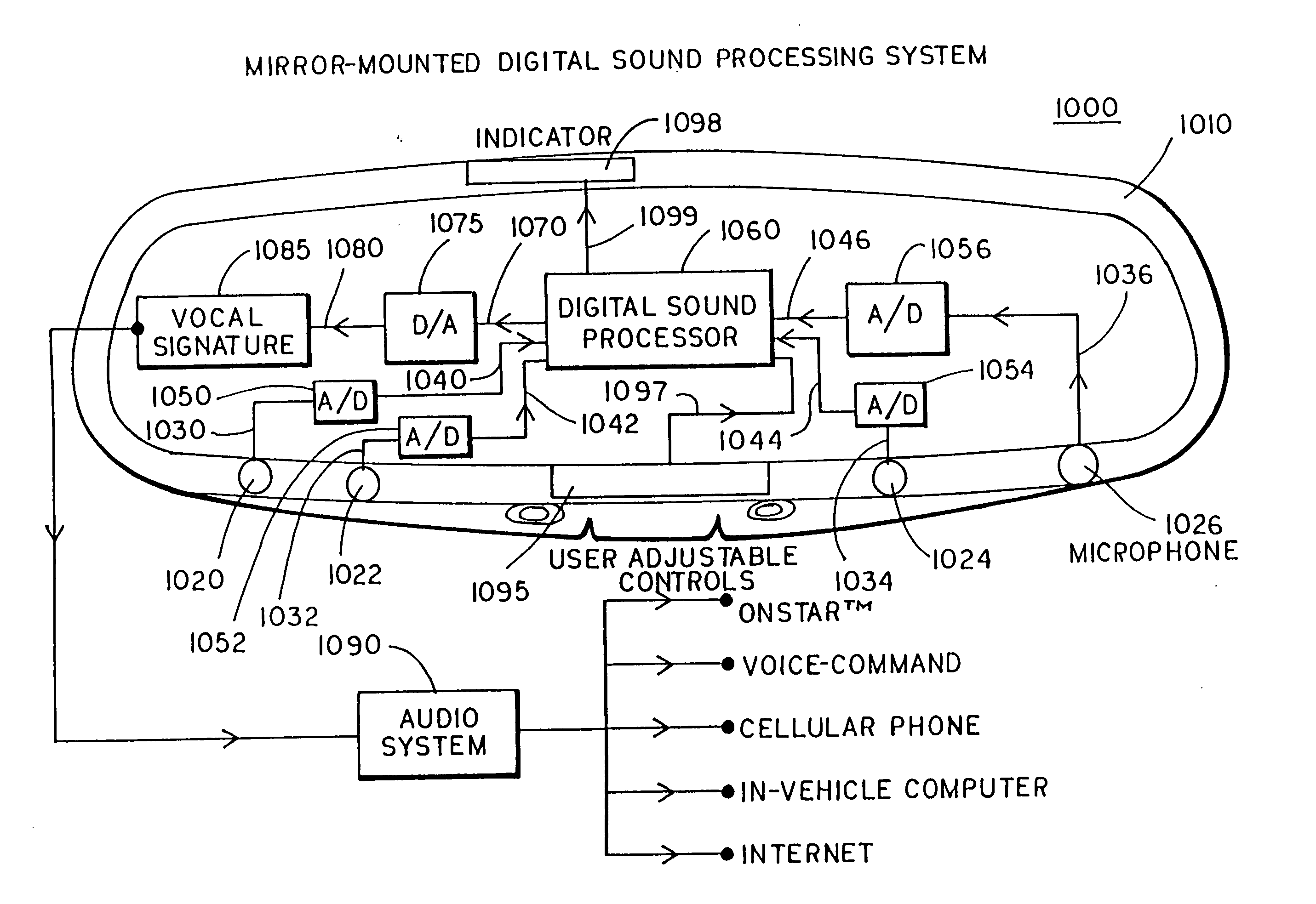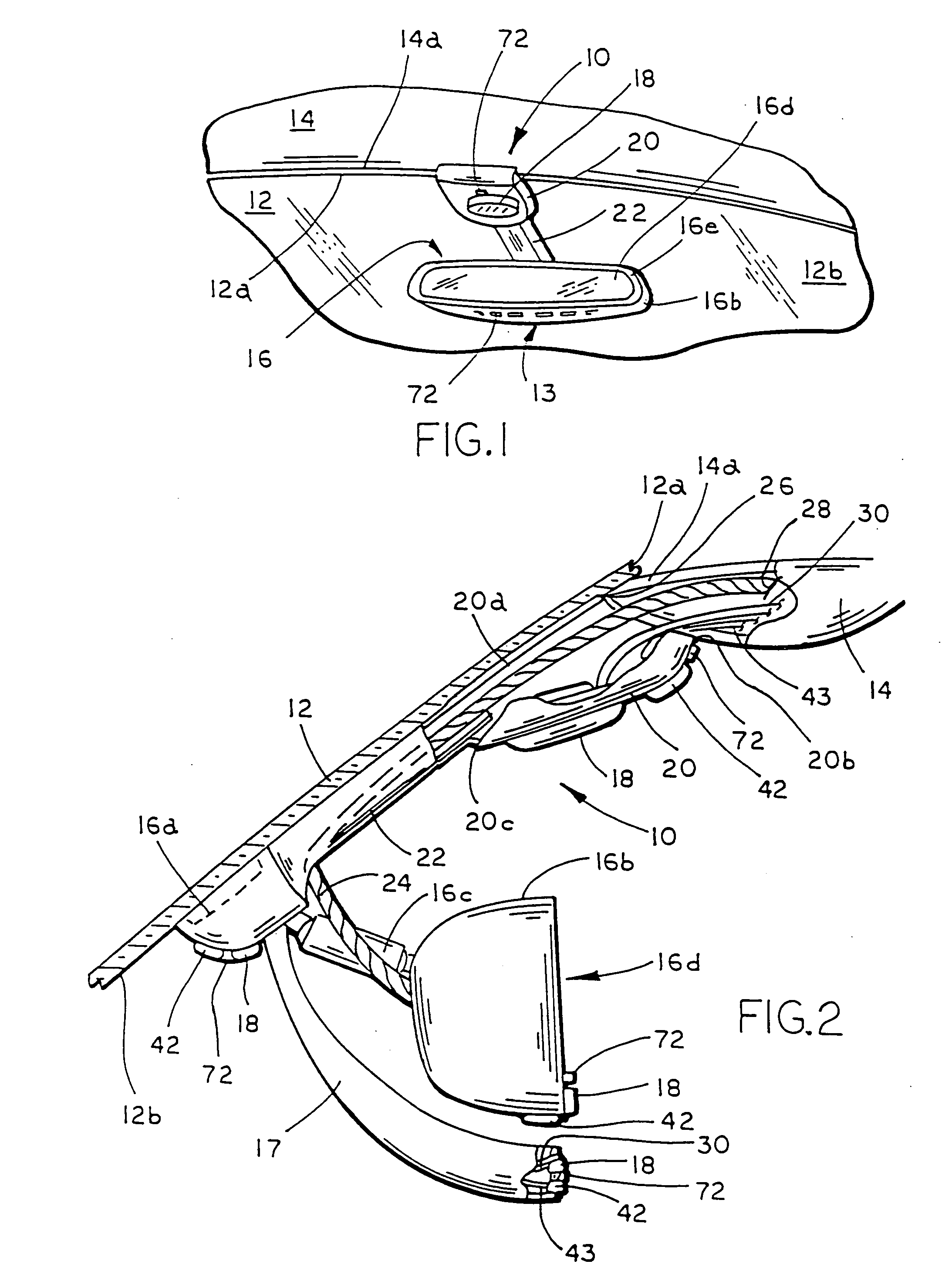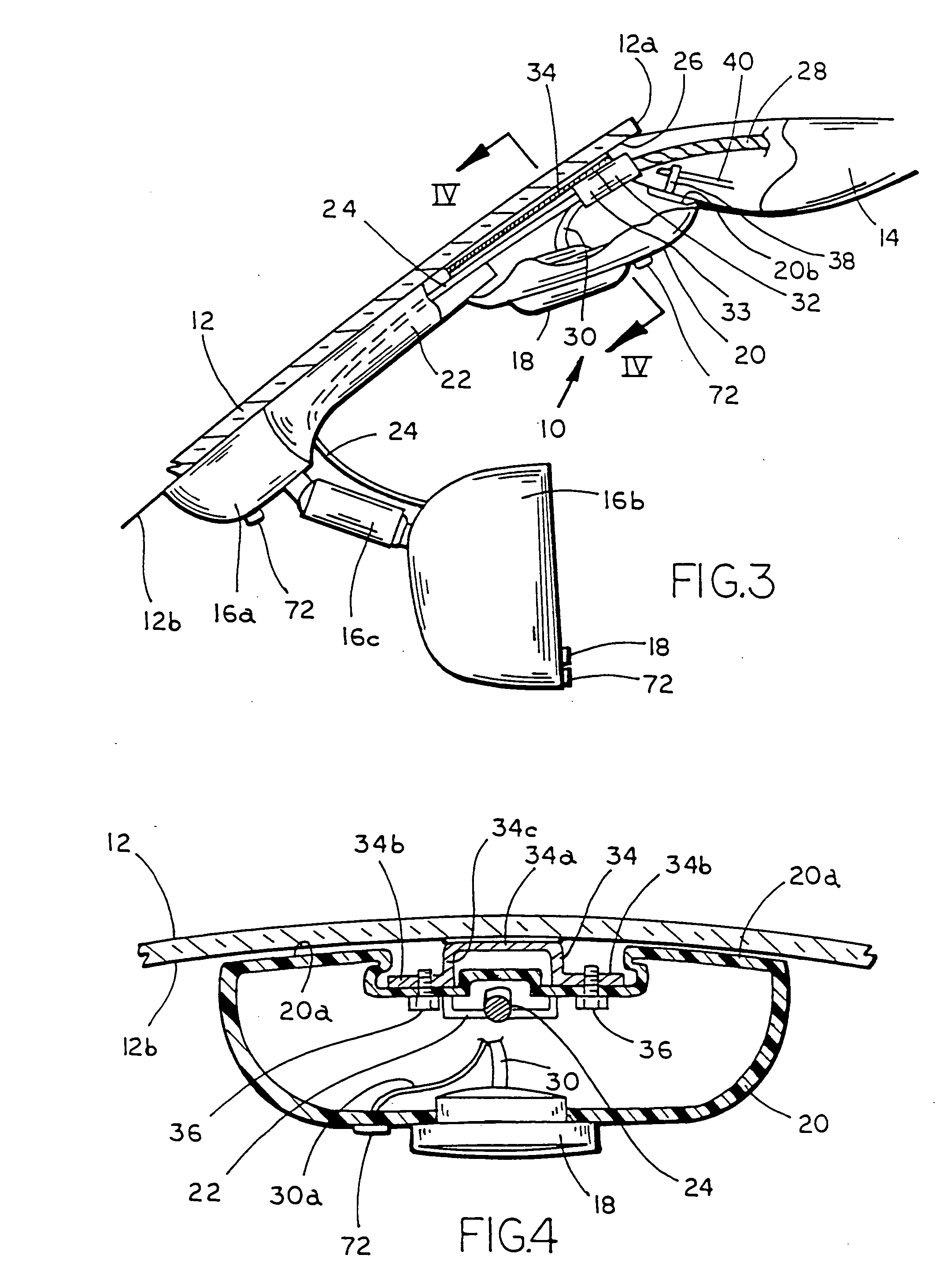Digital sound processing system for a vehicle
a digital sound processing and rearview mirror technology, applied in the field of interior rearview mirror sound processing system, can solve the problems of lack of clarity and/or volume, incorrect selection at the remote receiving party, etc., and achieve the effects of enhancing the human vocal signal received, facilitating installation, and reducing the number of parts
- Summary
- Abstract
- Description
- Claims
- Application Information
AI Technical Summary
Benefits of technology
Problems solved by technology
Method used
Image
Examples
Embodiment Construction
[0035] Referring now specifically to the drawings, and the illustrative embodiments depicted therein, an accessory or microphone module 10 is mounted adjacent to a vehicle windshield 12, as shown in FIG. 1. Microphone module 10 may be implemented in the vehicle in association with an audio system, such as a cellular telephone, a recording device, such as a dictation system, an emergency communication device, such as the ONSTAR™ system commercially available in certain General Motors vehicles, or any other audio device which may include a microphone or audio receiving device. Preferably, the manually actuated buttons to operate the ONSTAR™ system are mounted at a movable housing 16b of an interior rear view mirror assembly 16, such as is shown generally at 13 in FIG. 1. The vehicle includes a headliner 14, which at least partially covers the ceiling of an interior passenger compartment of the vehicle and has a forward edge 14a which interfaces with an upper edge 12a of windshield 12....
PUM
| Property | Measurement | Unit |
|---|---|---|
| wavelengths | aaaaa | aaaaa |
| wavelengths | aaaaa | aaaaa |
| time interval | aaaaa | aaaaa |
Abstract
Description
Claims
Application Information
 Login to View More
Login to View More - R&D
- Intellectual Property
- Life Sciences
- Materials
- Tech Scout
- Unparalleled Data Quality
- Higher Quality Content
- 60% Fewer Hallucinations
Browse by: Latest US Patents, China's latest patents, Technical Efficacy Thesaurus, Application Domain, Technology Topic, Popular Technical Reports.
© 2025 PatSnap. All rights reserved.Legal|Privacy policy|Modern Slavery Act Transparency Statement|Sitemap|About US| Contact US: help@patsnap.com



